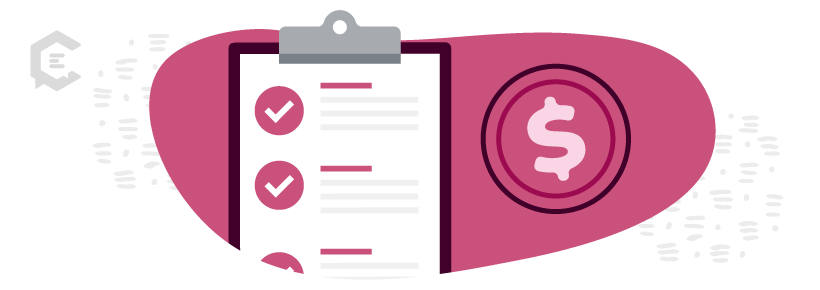With so much bombarding on a daily basis, today’s consumers only want to see content relevant to them. Exhausted by the constant tsunami on every channel, they tune out anything they perceive as generic because it’s most likely not going to meet their needs or pique their interest.
For marketers, it’s a challenge to personalize content for their audience segments. Demographic data has been one strategy. However, it is neither comprehensive nor flexible enough to address all the unique traits and behaviors that define a diverse group of consumers.
But when you personalize content with behavioral targeting, you enable a more effective level of customization in both content and user experience. This guide will show you how to unleash the power of behavioral targeting to personalize outreach and increase engagement with your audience members.
Defining behavioral targeting and the data behind it
Behavioral targeting is a marketing process that transcends demographic data and focuses on specific behaviors, using that information to create more robust user profiles.
These profiles are organized by behavior types that inform marketers how to engage with those users by addressing their personal needs, preferences, and attitudes.
Marketers can collect behavioral data through cookies, web analytics tools, IP addresses, and browsing history. Although behavioral targeting does resemble demographic data points, such as geographic location and device type, behavioral targeting gathers metrics related to visits, transactions, browsing, and purchases to understand customer motivations and purchasing behaviors.
How to personalize content with behavioral targeting
Personalizing content with behavioral targeting can be effective in transforming your efforts in many ways:
1. Remarketing and retargeting
Both remarketing and retargeting help you pursue prior visitors to your website. Placing ads on other websites they frequent, such as social networks, gaming sites, and online media sites, can help bring them back to an abandoned cart and persuade them to finish shopping with you.
Behavioral targeting pinpoints where users will go and what type of content will win them back.
Sites like Google and Outbrain can provide information on a number of factors adding depth to the personas you are trying to create through behavior data.
For example, you can learn how long users spent on certain pages, what they looked at and bought, the value of their orders, the number of products purchased, and how long it’s been since the user last visited the site.
2. Persona-based email campaigns
Using the personas generated from the collected behavior data, you can personalize content with behavioral targeting by creating emails for users based on the past actions they took on your website.
For example, one email campaign might be directed at users who abandoned their cart, while another might be focused on specific pages other users visited or frequented. Other examples of persona-based email campaigns include newsletter or blog subscriptions.
The content in each of these email campaigns can demonstrate the awareness of the user’s past behavior on the site by sharing similar information of interest.
This similar information could be developed into a blog post or a recent newsletter that covers topics that might interest the user.
The strategy can deepen engagement and loyalty while also eliciting users to share the value of your website with those in their social circle who might also want the same type of information or product solutions.
3. New customer acquisition
Behavioral targeting is not just for nurturing the customers in your database. You can also leverage that data to locate and convert new customers. Think about using customer acquisition data from your existing customer base or tracking consumers who show loyalty to your competitors.
Or, you can target consumers who regularly buy a product or service that complements your own.
For example, you can collect behavior data on social profiles and use that data to market your health food brand to consumers who follow fitness brands or show your pet products to consumers who follow pet pages on social media.
4. Video ads
Behavioral targeting can also shape the content of your video ads to add to amplify the impact on your target audience or win their trust.
Potential use cases include a new brand introducing itself to the market, a company dealing with a crisis, or a campaign with a social message. In these situations, a video can humanize the brand through live-action content and put a face and emotion to the message.
Here, behavioral targeting can identify the various segments you want to address in relation to the campaign’s intent and also help shape the message based on how each segment perceives and reacts to certain situations. You can craft the messaging for a video on social issues based on behaviors related to that issue.
This includes those aware of the social issue, those who may not be aware but show signs of wanting to help others or take up a social cause, and those unfamiliar with social issues that may impact them.
With a greater understanding of each audience segment, you can develop a video script that speaks directly to that segment.
5. Customer journey tracking
Another way to personalize content with behavioral targeting is through online tools that allow you to follow a customer throughout their purchase journey
However, behavioral targeting data helps you go deeper by narrating each customer’s story. More than just physically mapping the journey, this data delivers details about the motivation and intent at each step.
Gaining these insights can help you alter the user experience by personalizing the content to meet the different expectations at various stages in the journey.
Since every purchase journey differs, including for the same customer, it is helpful to have this ability to track behaviors on each conversion path.
6. Website navigation
The insights from behavioral targeting can also spotlight changes that should be made to your website to keep visitors from leaving at a certain point or due to a specific page.
Knowing a visitor’s behavior on a particular landing page, such as the time spent on the page or a quick exit that indicates a clear lack of interest, can tell you what to change.
Perhaps users are searching for specific information or content and jump around to several different pages until they find what they want. This behavior would indicate that you may need to change your navigation or make certain elements, such as a contact form, more visible.
Understanding how these behaviors impact your conversions spotlights how and where to improve your website, thus personalizing the user experience.
7. Localized messaging
If the location of your customers is an important factor in your marketing strategy, you may focus on geo-targeted mobile ads.
With this tactic, you can personalize content with behavioral targeting by pinpointing them and understanding their behavior on a local level, both online and offline.
Some applications include developing key user segments based on geographic location and shopping preferences and sending them targeted mobile ads for specific products when you detect that they are browsing in a certain area.
Combining this demographic parameter with behavioral metrics can drive local success for on-demand shopping. Sites like Facebook can elevate the process by providing additional details, allowing you to pursue certain groups like those that live or travel in a certain area.
8. Campaign timing
It’s not only the personalized message you send; it’s when you send it that counts, too. Knowing when your target audience is most likely online is critical to getting in front of them at the right time.
Behavioral targeting will tell you when to schedule content and how to optimize the frequency of your messaging. When your audience starts to hear from you on their time, they will realize you are paying attention to their needs and most likely will appreciate your personalized content delivery.
9. Upselling and cross-selling
Behavioral targeting helps you understand your customers and target audience members, thus giving you insight into other products or services that they are likely to buy.
From social media sites like Facebook to music apps like Spotify to online retailers like Amazon or Instacart, companies are personalizing content with behavioral targeting through personalized ads and product preferences based on user behavior.
Doing so increases the likelihood of upselling and cross-selling for additional revenue opportunities. In the process, the user is happy to see products and services that suit their tastes and needs rather than wading through irrelevant content.
10. Personalized offers and discounts
Behavioral targeting adds a personal touch to the user experience. Understanding customer behavior can help you deliver offers and discounts that align with both shopping patterns and impulse buying traits.
Also, it can tell your customers you are there to meet their needs and interests with additional value in the form of an ad that offers a custom coupon or deal.
Adding the ability to detect where customers are and deliver the offers can amplify the effectiveness of any marketing campaign and deepen the connection that a customer feels when they see your brand.
Getting started with behavioral targeting
While you may already be collecting some of the data needed to personalize content with behavioral targeting, it helps to explore other platforms and tools designed for this specific type of data.
Take time to research what type of behavior data you will need to craft personalized campaigns and interactions with your intended audience before you leverage any of the above tactics.
From there, select one or two tactics to test to better understand how behavioral targeting can work for your brand.
Need help creating personalized content to connect with your audience? Talk to a content specialist at ClearVoice today.







